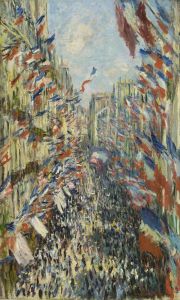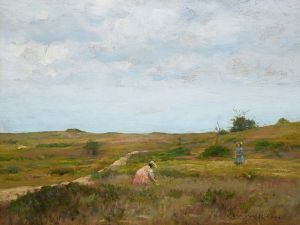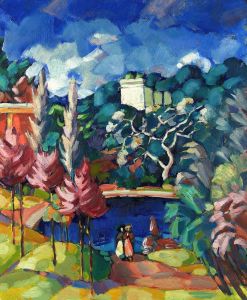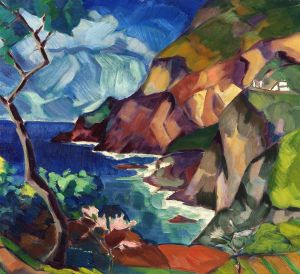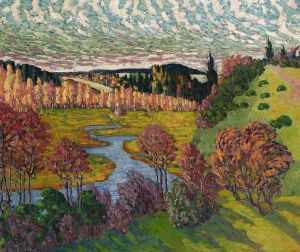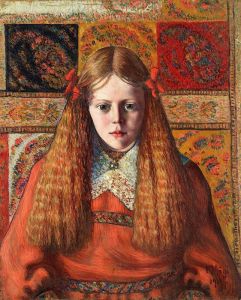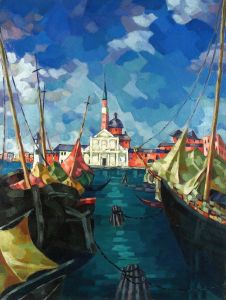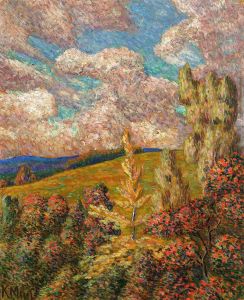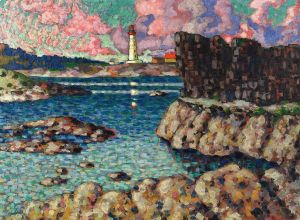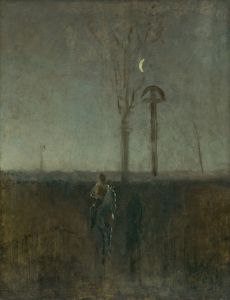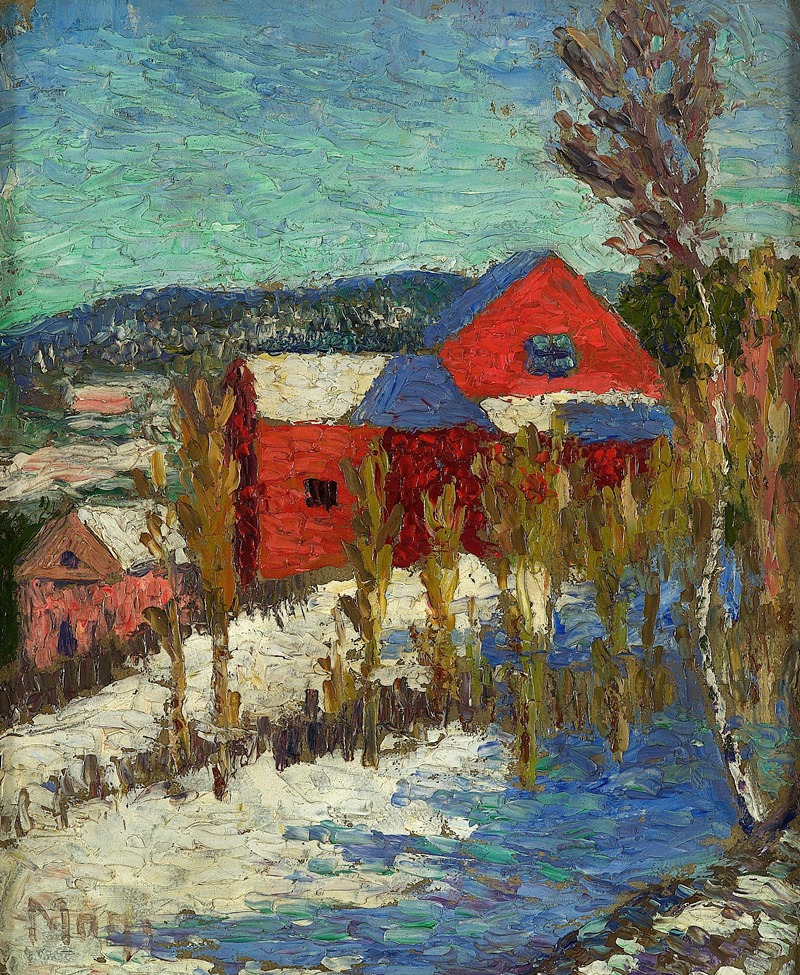
Maastik majadega
A hand-painted replica of Konrad Mägi’s masterpiece Maastik majadega, meticulously crafted by professional artists to capture the true essence of the original. Each piece is created with museum-quality canvas and rare mineral pigments, carefully painted by experienced artists with delicate brushstrokes and rich, layered colors to perfectly recreate the texture of the original artwork. Unlike machine-printed reproductions, this hand-painted version brings the painting to life, infused with the artist’s emotions and skill in every stroke. Whether for personal collection or home decoration, it instantly elevates the artistic atmosphere of any space.
Konrad Mägi was an Estonian painter known for his vibrant landscapes and unique use of color. Born on November 1, 1878, in the town of Rõngu, Mägi became one of the most prominent figures in early 20th-century Estonian art. His work is characterized by its expressive use of color and form, often capturing the natural beauty of the Estonian landscape.
"Maastik majadega," which translates to "Landscape with Houses," is one of Mägi's notable works. Painted during a period when Mägi was deeply influenced by the European avant-garde movements, this piece reflects his distinctive style that blends elements of Impressionism and Fauvism. Mägi's landscapes are celebrated for their emotional intensity and vivid color palettes, which convey a sense of movement and vitality.
"Maastik majadega" exemplifies Mägi's ability to transform a simple scene into a dynamic composition. The painting features a rural landscape with houses, depicted with bold brushstrokes and a rich array of colors. Mägi's use of color is particularly striking; he often employed contrasting hues to create a sense of depth and to highlight the interplay between light and shadow. This technique not only adds a three-dimensional quality to the painting but also evokes a particular mood or atmosphere.
Mägi's landscapes often reflect his personal connection to the Estonian countryside, capturing its essence with a sense of nostalgia and reverence. His work during this period is marked by a focus on the harmony between human habitation and the natural environment, a theme that is evident in "Maastik majadega." The houses in the painting are integrated into the landscape, suggesting a peaceful coexistence between people and nature.
Throughout his career, Mägi traveled extensively, and his exposure to different artistic movements and styles influenced his work significantly. He studied in Saint Petersburg and later spent time in Paris, where he was exposed to the works of the Impressionists and Post-Impressionists. These experiences enriched his artistic vision, allowing him to develop a unique style that combined elements of various movements while maintaining a distinct personal touch.
Konrad Mägi's contribution to Estonian art is significant, as he played a crucial role in the development of modern art in the region. His works are celebrated for their innovative use of color and form, and they continue to be admired for their ability to capture the beauty and spirit of the Estonian landscape. "Maastik majadega" remains an important piece within Mägi's oeuvre, exemplifying his mastery of landscape painting and his ability to convey emotion through color and composition.
Mägi's legacy endures, and his paintings are held in high regard both in Estonia and internationally. His works are part of several major collections, and they continue to be studied and appreciated for their artistic and historical significance. "Maastik majadega" is a testament to Mägi's skill as a painter and his deep connection to the natural world, reflecting the enduring appeal of his artistic vision.





